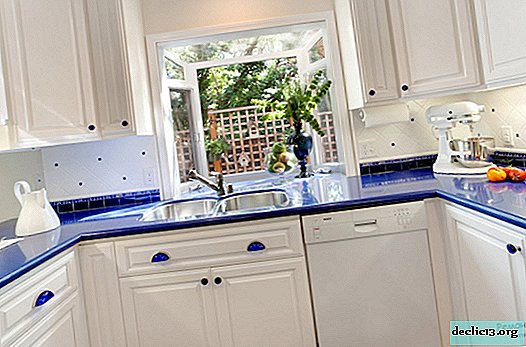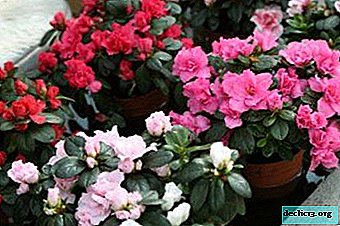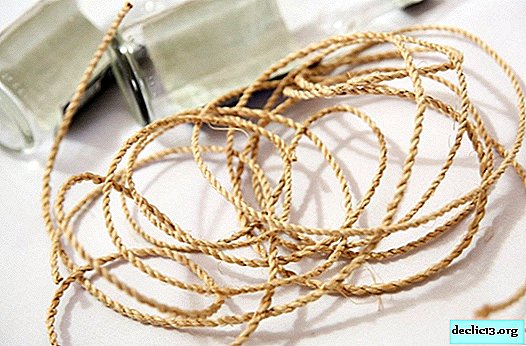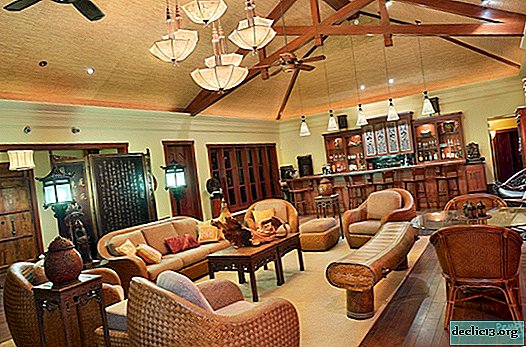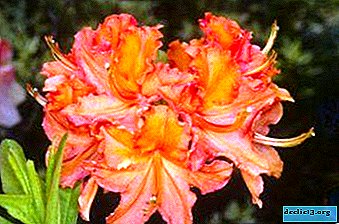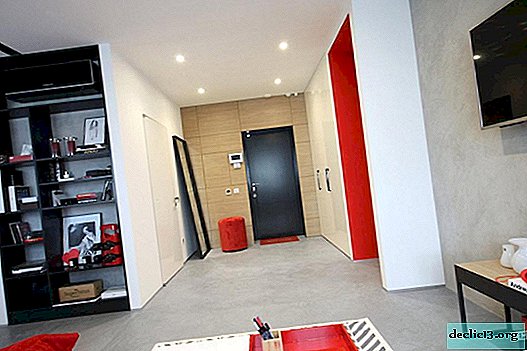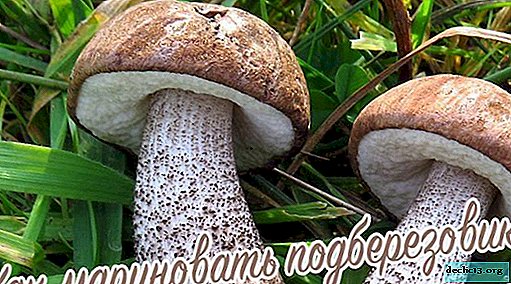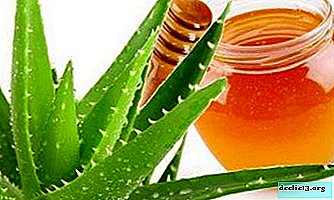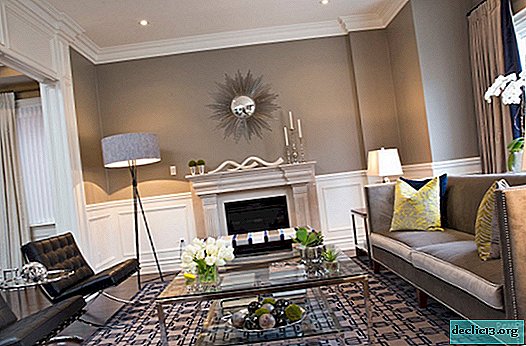What is false raspberry sedum, what is its appearance and how to plant it at home?
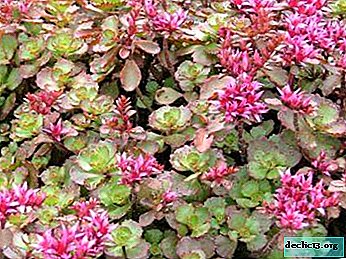
In modern floriculture, the Sedum variety false "Purple Carpet" is planted as an ornamental plant on flowerbeds, rockeries, multi-tiered flower beds and alpine slides, and is widely used in design for landscaping roofs and arched openings.
How to care for this plant, how to successfully plant and propagate it, so that this handsome succulent delights you with its appearance.
What difficulties can an amateur gardener face in keeping a false sedum? We will talk about all this later in the article.
Description
Title
Stonecrop false "Purple Carpet", Latin name Sedum spurium "Purple Carpet", refers to perennial succulents, is classified as a herbaceous plant of stonecrops of the large family Crassulaceae.
The view was discovered by German traveler and botanist Marshall Friedrich von Bieberstein in the 19th century. In their work “Crimean - Caucasian Flora”, scientists were given the first detailed description of this species.Later, the plant was named Caucasian stonecrop due to the habitat of the species. In nature, stonecrop false grows in the northern regions of the Caucasus, in the north-west of Iran, in Turkey.
 Also, the view has the name of a two-row stonecrop (Two-row stonecrop) due to the peculiarities of the arrangement of leaves.
Also, the view has the name of a two-row stonecrop (Two-row stonecrop) due to the peculiarities of the arrangement of leaves.
A more accurate scientific name of the genus is False, unclear Fedimus (Phedimus spurius).
In the 20th century. a huge number of decorative ground cover varieties. Among them - one of the most popular and widespread - the variety "Purple Carpet".
Due to the bright, dense carmine-pink inflorescences of the plants, flower growers call this variety a stoneberry raspberry.
What does it look like?
False Sedum "Purple Carpet" - stunted bush, squat, grows in height no more than 15 -20 cm.
Creeping stems, creeping, highly leafy, form a dense compact bush with a diameter of 40 - 50 cm.
Stems evenly spread across the surface of the substrate in all directions. Leaves are arranged on the stem in two rows. The leaf plate is bright green.
The leaves are fleshy, flat, dentate apex, dull at the base. Leaf length - up to 5 - 6 cm, width - 3 - 4 cm.
Inflorescences are dense, dense, corymbose, unite many flowers. The flowers are small, purplish - red, can be carmine-pink colors. Pointed petals.
Flowering is long, lasts up to 1.5 - 2 months, begins in June - July, depending on the region. Important: dense dense inflorescences during flowering cover the entire bush with a thick carpet, covering the stems and leaves. The seeds are small, dusty, ripen in the fruits - multi-leafed. Seed crops are highly germinated.
Attention! In the autumn, the bush is exposed, the plant drops its leaves.The root system is creeping, root processes are cord-shaped, long.
And this is how the plant looks in the photo:




Is it easy to grow and how long does it live?
Stonecrop false "Purple Carpet" refers to fast-growing varieties, grows well in flower gardens for 2 - 3 years. The species is considered frost-resistant; it hibernates without shelter in moderate climatic conditions. It can tolerate frosts up to 10 - 12 ° C. Arid summer plant tolerates well, resistant to drought and bright sun.
Important! To preserve the decorative form of the bushes, it is recommended to rejuvenate every 4 to 5 years.With regular pruning, planting, proper care, a suitable substrate, the plant lives on the site for a long time, up to 6-8 years.
Seeds fully ripen in August, growing seedlings through sowing is possible even at home.
The bushes look good before and after flowering due to the bright colors of dense foliage.
Leaves have healing properties. In folk medicine, it is widely used in the treatment of burns, the removal of warts, corns. Tinctures are used in the treatment of joints.
The juice of the plant is toxic, can cause an allergic reaction.
Care
Stonecrop false "Purple Carpet" prefers bright direct sunlight. Landings are recommended to be carried out mainly in well-lit, southern places. It is not recommended to plant in the garden under trees or large shrubs.
 On the balcony or open terraces, containers are allowed on the east and west sides.
On the balcony or open terraces, containers are allowed on the east and west sides.
Indoor lighting requires additional lighting in spring and autumn. The temperature of home maintenance during dormancy, in winter, should be reduced to 10 - 12 ° C.
Watering is rare, as the soil dries. Spraying the bushes is optional. In spring, dust can be washed off with a light diffused shower. Regular top dressing is not required. It is enough to fertilize the substrate when planting with compost.
In early spring, the bushes should be cleaned of old leaves, dry stems. After flowering, wilted peduncles are cut.
Breeding
Cuttings
In spring, before flowering, bushes can be propagated with green cuttings.. A healthy young shoot is used. The stems are cut into cuttings measuring 6 - 7 cm. The lower leaves are removed. Cuttings quickly take root in a sandy substrate.
Reference! When planting, the sheet node is buried in the ground. You can plant cuttings immediately to a permanent place of planting.Watering the cuttings to root should be plentiful. Light shading of young seedlings is required.
Seeds
How is the cultivation of seeds of false raspberry stonecrop? Sowing for seedlings is carried out in the spring or in October for the winter.
Pre-prepared soil mixture:
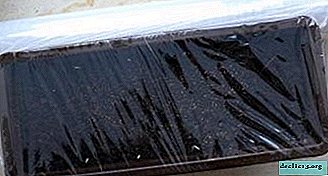 Sheet land - 1 h.
Sheet land - 1 h.- Sod land - 1 h.
- Peat - 1 hour
- Sand - 1 hour
- Lime - 0.5 hours
- Drainage from small gravel and crumbs of red brick.
Sowing tanks should be medium in size, shallow. Crops give small shoots with small roots.
The scheme of sowing the seeds of the cadet false "Purple carpet":
- Seeds are evenly distributed in the planting tanks without embedding in the soil.
- Sowing is moistened with a fine spray.
- The greenhouse is covered with glass or a transparent film.
- The containers are placed in a cool room with an air temperature of not more than 7 - 8 ° C.
- After 2 weeks, the seedlings are moved to a room with a temperature of 18 ° C.
- The necessary daily ventilation of the greenhouse.
- Sowing is moistened as the substrate dries.
- The grown seedlings dive into pots after 2 to 3 weeks.
- At the end of May, young seedlings are planted in open ground at a distance of 15 - 20 cm from each other.
Dividing the bush
The procedure is best performed in spring or autumn. Rejuvenating plantings, adult bushes are dug up, dividing into parts.
The separated part should preserve part of the root and young shoots with buds. Updated bushes are planted at a distance of 20 - 25 cm.
Landing
 Landing in open ground is best done in May or October. Pre-excavated holes with a diameter of 40 - 50 cm. It is necessary to choose a suitable place for plant growth.
Landing in open ground is best done in May or October. Pre-excavated holes with a diameter of 40 - 50 cm. It is necessary to choose a suitable place for plant growth.
Wells are filled with a special substrate. The composition of the soil is garden soil, sand, humus in a ratio of 2: 2: 1. Seedlings are buried. The soil is being moistened.
The mulching of the substrate is carried out with gravel or small gravel. Mandatory weeding and regular loosening of the substrate.
Content difficulties
- With insufficient lighting, the stems are stretched, the leaves turn pale. It is required to cut the elongated shoots, transplant the bushes in a more illuminated place.
- Excessive nitrogen fertilizer causes rotting of stems and leaves. It is required to limit fertilizers.
- From excessive moisture, the roots are bled, they begin to rot. Transplantation, replacement of the infected substrate, sanitary trimming of the affected areas are required.
- From the attack of thrips, caterpillars, bugs, prophylactic treatment of the substrate and bushes is necessary once a season by actellic or other insecticides.
In order for the bushes of the false carpet "Purple Carpet" to bloom profusely, give a good growth, it is necessary to observe simple rules for caring for the plant.

 Sheet land - 1 h.
Sheet land - 1 h.